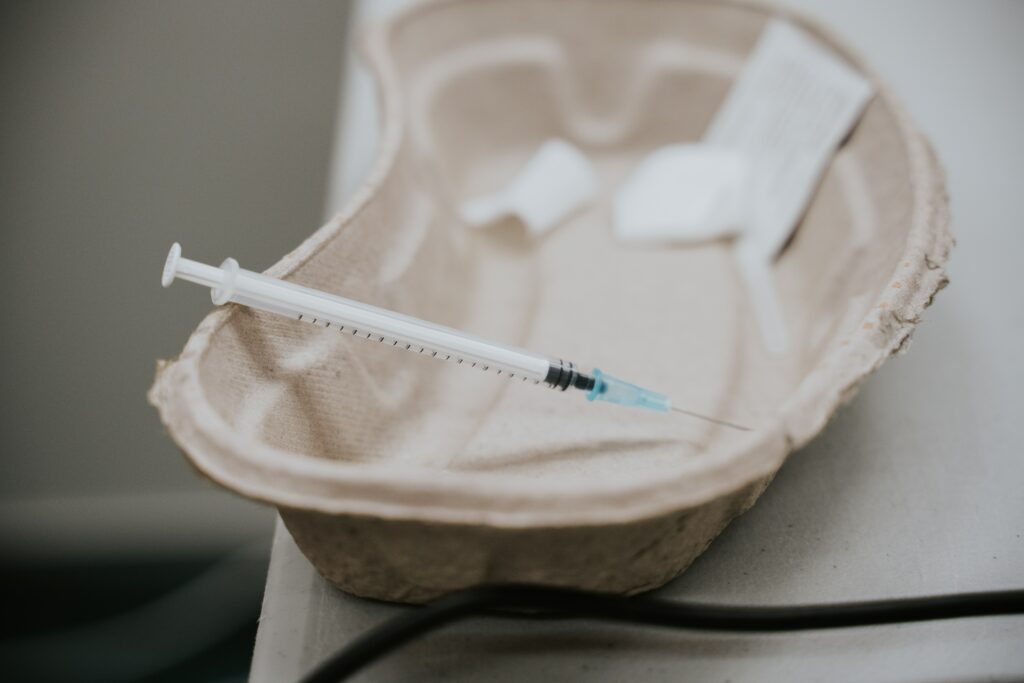Polio was a lot more common in the past, but after the Global Polio Eradication Initiative was launched in 1988, the number of cases decreased. In 2003, it was eradicated in Europe, though there are still areas of the world where it is prevalent.
However, a type of poliovirus has been found 114 times in London sewers since February 2022. Whilst most people are vaccinated against this disease, there are still those who are vulnerable due to being unvaccinated for several reasons, such as not being old enough to have had all the relevant injections.
To help protect people, the UK government are offering the polio vaccine to children aged 1-9 in London because of their increased risk of infection. This may be an additional injection for some children or to help others get up to speed with their childhood inoculations.
You can find out more about the current disease outbreaks and whether or not there are vaccinations against them through the Travel Health Clinic website.
An infectious and contagious disease, this illness can be life-threatening and disabling for those who contract it. It is also caused by the poliovirus. Whilst most people infected show no symptoms, it can infect the brain and spine, which can lead to paralysis. This means they won’t be able to move parts of their body.
Poliovirus can pass from person to person and is transmitted in a variety of ways. This includes direct contact with a person with the illness and through food or water that has been contaminated with infected human faeces.
Post-polio syndrome (PPS) is a condition that can impact polio survivors and this is where the symptoms of the disease can return years later, such as the shrinking of muscles, known as muscle atrophy and muscle weakness. Some people suffering from PPS may need aid with walking or require a wheelchair.
Cases of polio and post-polio syndrome have been traced back thousands of years. Some paintings and illustrations show potential evidence of polio and PPS, such as an ancient Egyptian tomb depicting a person with an atrophied leg and a walking stick.
At the moment, polio is an endemic in Afghanistan, Nigeria and Pakistan. Some countries require travel vaccines before you can enter or leave, and whilst this is not always against polio, some may require you to show a polio vaccination certificate upon your arrival. These countries include Egypt, Sri Lanka, India and Pakistan, although this is not a comprehensive list.
There are currently no cases of polio in London at the time of writing, although the poliovirus has been detected in London sewage 114 times since February 2022. In New York, there has been one confirmed case in July 2022. An unvaccinated adult developed paralysis, though it is believed that hundreds of people contracted polio from this one case.

In the UK, the polio vaccination is usually administered via 5 injections as part of a person’s childhood inoculations. The first tends to be given when a child is 8 weeks old and the last when they are 14 years old. If you are travelling to a destination where polio is prevalent and your last vaccination against the disease was given over 10 years ago, a booster is recommended to protect you against the illness.
In the UK, you are considered protected for life from polio if you receive 5 doses of the vaccine.
However, if you are travelling, you should still speak with your doctor about whether a polio booster vaccination is recommended for your travel destination.
There are many reasons to get a polio vaccine, and you can book your polio vaccine through the Travel Health Clinic to help prevent you from contracting the disease. The inactivated poliovirus vaccine will be provided via an injection to the arm or leg, depending on how old the person getting the vaccination is, and we offer a combined diphtheria, tetanus and polio vaccine to offer protection against all three diseases.

With the recent findings of poliovirus in London, it is important that you know the symptoms of this disease and what to look for if you or your child begins to suffer from them.
Most people infected with the virus show no visible symptoms. However, 1 in 4 people will suffer from flu-like symptoms, such as:
– Tiredness
– Headaches
– Nausea
– Sore throat
– Stomach pain
– Fever
They will usually go away on their own within 2-5 days, and medications can be taken to help with flu symptom relief.
A smaller number of people will suffer from more serious symptoms. These are life-threatening and last for a long time and they include meningitis and paralysis.
Meningitis affects approximately 1-5 in 100 people who suffer from polio and it is an infection that impacts the brain via inflammation, as well as the spinal cord.
Paralysis affects approximately 1 in 200 to 1 in 2000 people, depending on which type of the virus caused their polio. It means a person can suffer from weakness in their arms, legs, or both, and they are unable to move parts of their body. This is the most serious symptom of polio because it can lead to disability. If it impacts the muscles required for breathing, it can also result in death.
Currently, paralytic polio has no cure. It also has no specific treatment for the illness. However, patients can find it beneficial to use physical or occupational therapy as part of their recovery. This can allow them to attempt to recover minimal movement if they only suffered from limb weakness instead of paralysis, which could help to improve the long-term outcomes of the disease.
Polio is a potentially life-threatening illness that is highly contagious and can impact a person years later. Despite this, the vaccine can protect people from this disease and help to reduce the number of cases around the world. For more information about other diseases like polio, take a look at our Diseases A-Z.